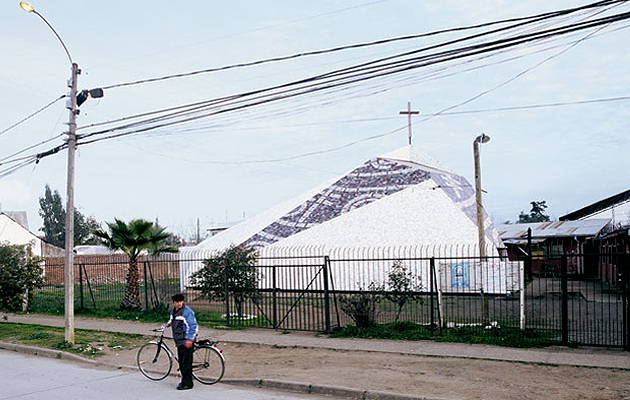|
|
||
|
Patricia Urquiola is basking in sunlight on a balcony of the Palazzo Durini, a lavish 17th-century former merchant’s palace tucked away off a busy street in Milan. Here the Spanish designer is hosting Not for All, her first exhibition of limited-edition objects. It’s a setting that suits the glamour and pomp of the furniture fair; the room’s elaborate terrazzo floor and dramatic ceiling fresco seem to embolden her collection rather than inhibit it. Surveying the spread of colourful furniture, delicate glassware and the enormous sequin canvas that adorns one wall, it’s easy to see that Urquiola likes putting on a show. “At first I said I would never do limited editions. I am not an artist,” says Urquiola, who has gained a solid reputation over her 20-year career for creating furniture for design giants such as Moroso, Kartell, Driade and B&B Italia. “I love to control process and I’m committed to industry,” she says. But encouraged by Nilufar Gallery owner Nina Yasher, who saw the prototypes lying about Urquiola’s Milan studio as works in their own right, she warmed to the idea of the limited edition and “its potential dialogue with industry”. “[The exhibition] is about the wastefulness of design,” explains Urquiola as she strokes her double-printed sequin canvas one way to reveal the message “waste” and then strokes it the other way to say “no waste”. The bizarre artwork superimposes bits from her collection, geometric patterns and the universal symbol for litter bins. Below it sit a pair of yellow and skin-coloured Murano vases made with leftover glass from Urquiola’s Glasstress exhibit at Ventura Lambrate – a collection of whimsical works that were inspired by “animal and vegetable themes”. A table she created for the set of Monteverdi’s opera L’incoronazione di Poppea, performed in her hometown of Oviedo last September, is reincarnated in Not for All: a pair of slender oak legs stand at one end while the other is enveloped by a stack of flesh-coloured boxes. “Invasions of cubes on a desk,” says Urquiola. Next to it is a hot pink cardboard prototype of a similar desk. It is too complicated to put into production and so has remained in its transient form. “We try out everything in cardboard. That’s how we like to work.”
Urquiola’s name is everywhere in Milan. From edgy Ventura Lambrate in the east to the main fairgrounds at Rho, and in many of the slick showrooms that are scattered about in between, she presented projects for a total of 12 brands including Pavo Real, a colourful outdoor chair for Driade, the Tatou light for FLOS and three new versions of her classic Comb chair for Kartell. For B&B, Urquiola designed Husk, which is “an armchair of 13 little cushions in an injection-moulded plastic shell”. Continuing her concern about wastefulness, she opted for recycled plastic and made the chair easy to dismantle after use. The design builds on the success of Bend, a sofa she launched for B&B last year: “It was an experiment to see if I could sell a simple, sustainable product through an established Italian company.” Bend became a bestseller and forged the way for a new “easiness” in Italian design. “Still sophisticated. Still made in Italy. But simple,” she says. For Moroso she launched Biknit, a steel-framed easy chair on wooden supports with large fabric cables woven together as a seat. “It’s very simplified. Like knitting on a metal frame. Like a type of spaghetti,” she says with a grin. Biknit, like many of Urquiola’s most innovative designs, is the fruit of her relationship with friend and patron Patrizia Moroso. For 11 years, they’ve collaborated on many projects, most recently on Moroso’s private home in Udine, which was completed last September. The combined vision of two of the design world’s most prominent women is a surprisingly understated affair. Urquiola, who is also a qualified architect, designed a lofty cedar-clad box, enveloping double-height spaces filled with natural light and metal furniture by another of Moroso’s protégés, Ron Arad. Urquiola may appear flippant and carefree (with a habit of peppering her rapid conversation with phrases of Italian that makes keeping up with her even harder) but she also has an impressive record for translating her playful ideas into real products. Not satisfied with working with some of the world’s most respected brands, of all of her creations for Milan, she’s most proud of the vases she produced for Glasstress. “It’s experimental and I’m becoming more and more that way. I’m trying to grow.”
|
Image Amendolagine Barracchia
Words Riya Patel |
|
|
||




















